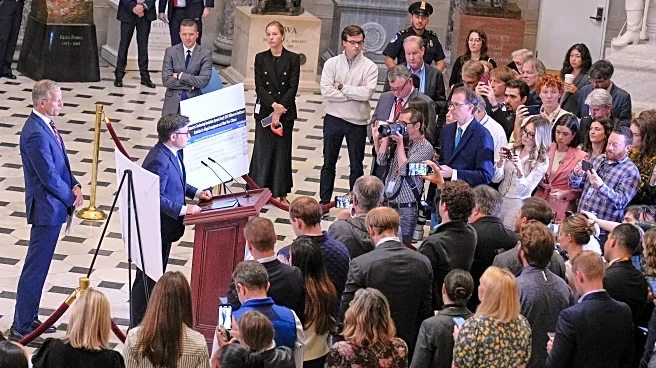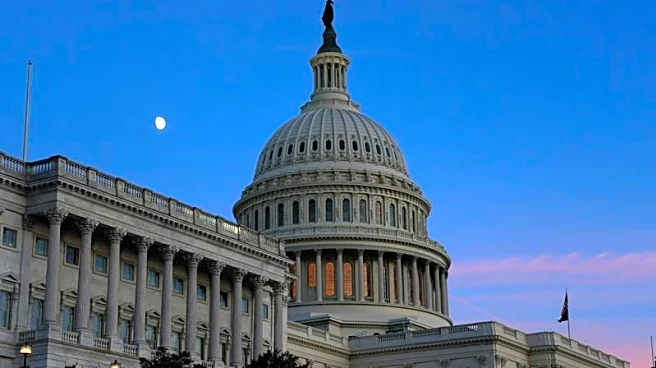What's Happening?
Michigan lawmakers have finalized the 2026 state budget, totaling $75.9 billion, but notably excluded a $50 million earmark intended for infrastructure improvements around the proposed Copperwood Mine in the Upper Peninsula. This decision comes after the earmark was initially included in the House budget passed in August. The Copperwood Mine, a $425 million project by Highland Copper, is fully permitted but faces opposition from environmental groups and Indigenous tribes due to its proximity to Lake Superior and Porcupine Mountains Wilderness State Park. Despite local support for the mine, which is expected to drive economic growth and job creation, the earmark was cut from the final budget draft. Highland Copper has been seeking capital to begin construction in 2026 and had described the state funding as crucial for site infrastructure development.
Why It's Important?
The exclusion of the $50 million earmark from the budget has significant implications for the Copperwood Mine project and the local economy. Supporters argue that the mine could revitalize the region by creating jobs and improving infrastructure, such as roads and broadband, which are critical for local development. However, opponents view the decision as a victory for environmental protection, emphasizing the need to preserve the natural landscape and prevent potential ecological damage. The budget cut reflects broader debates on balancing economic development with environmental conservation, highlighting the challenges faced by regions dependent on natural resource extraction.
What's Next?
Governor Gretchen Whitmer is expected to sign the budget into law before a temporary spending measure expires. Meanwhile, Highland Copper will need to explore alternative funding sources to proceed with the Copperwood Mine project. The company has already secured a non-binding letter of interest from the U.S. Export-Import Bank for up to $250 million in debt financing. Local officials and economic developers may continue to advocate for the project, while environmental groups are likely to maintain their opposition. The outcome of these efforts will shape the future of the Copperwood Mine and its impact on the Upper Peninsula.
Beyond the Headlines
The decision to cut the earmark raises questions about the role of government funding in supporting private sector projects, especially those with potential environmental impacts. It also underscores the importance of community engagement and the need for transparent decision-making processes that consider diverse stakeholder perspectives. The case of the Copperwood Mine may set a precedent for how similar projects are evaluated and funded in the future, influencing policy discussions on sustainable development and resource management.












